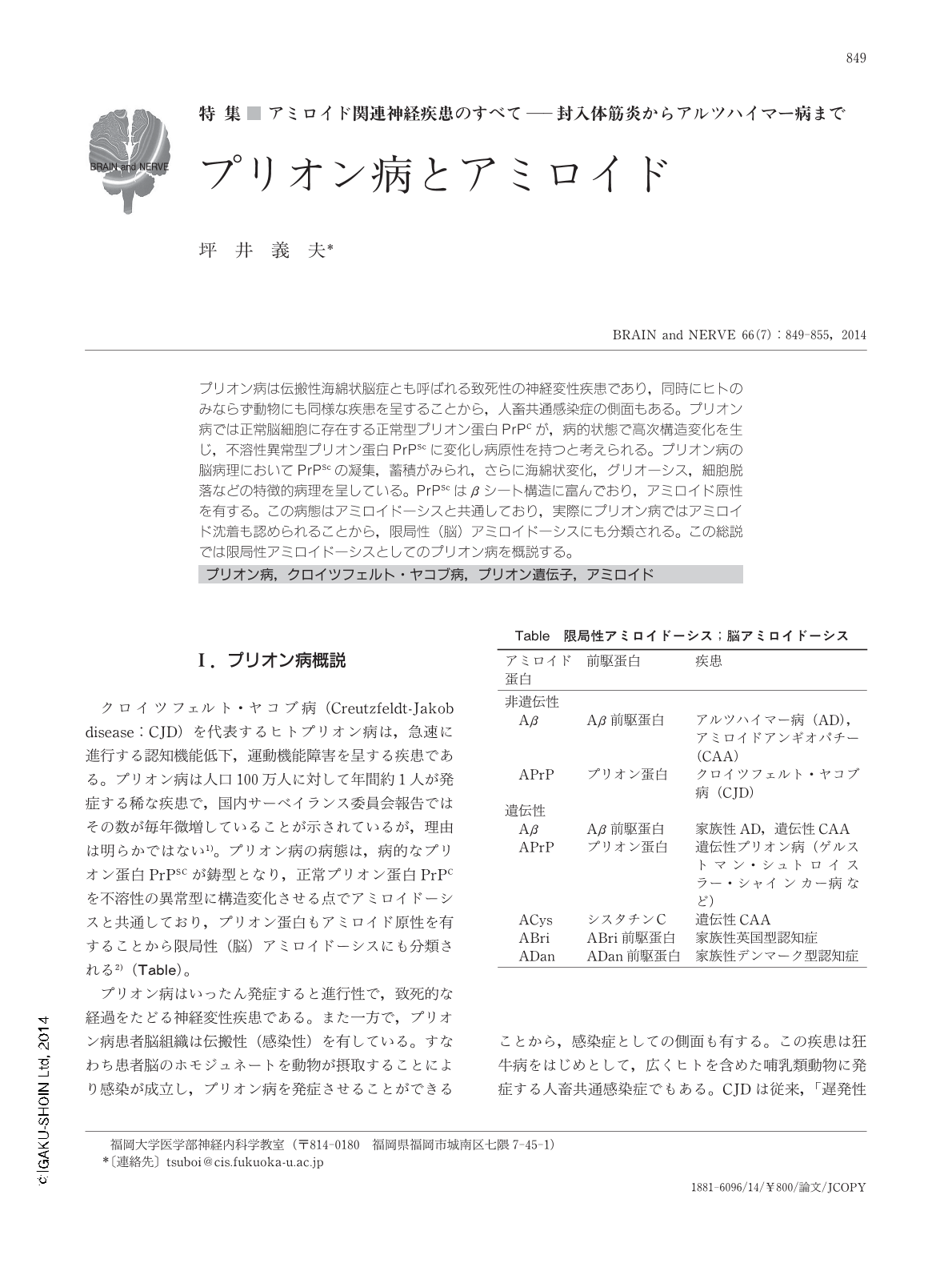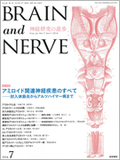Japanese
English
- 有料閲覧
- Abstract 文献概要
- 1ページ目 Look Inside
- 参考文献 Reference
プリオン病は伝搬性海綿状脳症とも呼ばれる致死性の神経変性疾患であり,同時にヒトのみならず動物にも同様な疾患を呈することから,人畜共通感染症の側面もある。プリオン病では正常脳細胞に存在する正常型プリオン蛋白PrPCが,病的状態で高次構造変化を生じ,不溶性異常型プリオン蛋白PrPScに変化し病原性を持つと考えられる。プリオン病の脳病理においてPrPScの凝集,蓄積がみられ,さらに海綿状変化,グリオーシス,細胞脱落などの特徴的病理を呈している。PrPScはβシート構造に富んでおり,アミロイド原性を有する。この病態はアミロイドーシスと共通しており,実際にプリオン病ではアミロイド沈着も認められることから,限局性(脳)アミロイドーシスにも分類される。この総説では限局性アミロイドーシスとしてのプリオン病を概説する。
Abstract
Prion diseases, also known as transmissible spongiform encephalopathies, are defined as fatal, neurodegenerative, and transmissible disorders that affect both humans and other mammalian species. The central pathogenic mechanism in prion diseases is the conformational conversion of the normal prion protein, PrPC into the pathogenic prion protein, PrPSc. PrPSc, which is rich in β-sheet structure, is resistant to proteinase degradation and hence, accumulates within the brain. These processes closely relate to development of the pathology of prion diseases such as spongiform change, gliosis, and neuronal loss. Prion diseases are thought to be a type of localized amyloidosis of the brain because prion protein itself is amyloidogenic. We herein discuss prion diseases from the point of view of localized amyloidosis.

Copyright © 2014, Igaku-Shoin Ltd. All rights reserved.


